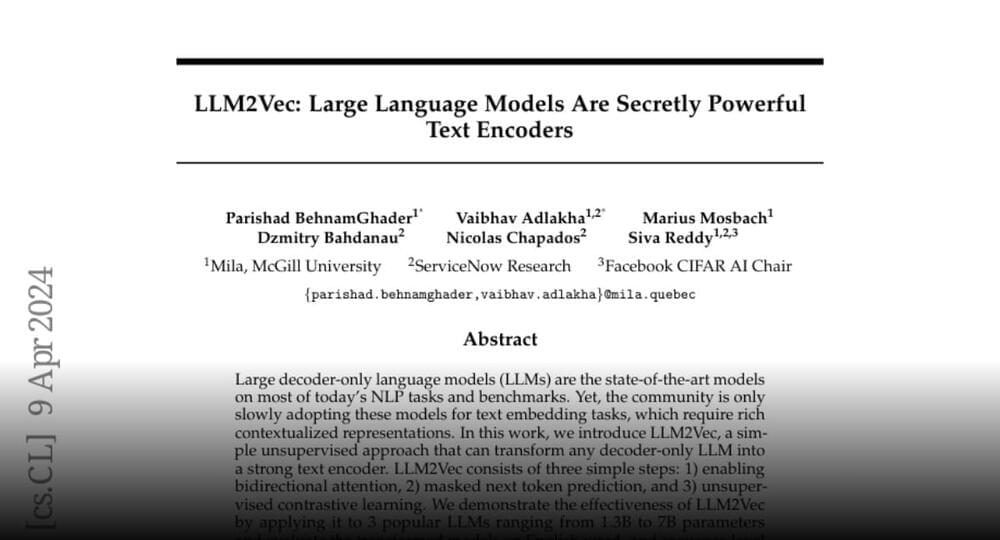Here’s why he believes the landmark law he helped to shepherd through will change the AI sector for the better.


CEO Sam Altman famously has no equity in OpenAI, but startup bets like Reddit, Stripe and Helion have made him a billionaire anyway, a Forbes investigation found.



From sensetime, shanghai #AI lab, & tsinghua U
InternLM-XComposer2-4KHD
A Pioneering Large Vision-Language Model Handling Resolutions from 336 Pixels to 4K HD https://huggingface.co/papers/2404.
The Large Vision-Language Model (LVLM) field has seen significant advancements, yet its progression…
Join the discussion on this paper page.

“We need to accelerate and intensify efforts to recover Antarctic meteorites,” said Dr. Harry Zekollari. “The loss of Antarctic meteorites is much like the loss of data that scientists glean from ice cores collected from vanishing glaciers – once they disappear, so do some of the secrets of the universe.”
How can climate change effect the search for meteorites in Antarctica? This is what a recent study published in Nature Climate Change hopes to address as an international team of researchers investigated how melting snow and ice could prevent successful identification of meteorites, of which approximately 60 percent of all meteorites retrieved on Earth have been found in Antarctica. This study holds the potential to help scientists, climate change activists, and legislators better understand the impacts of climate change on science, as meteorites are crucial for gaining greater insight into the formation and evolution of the solar system and beyond.
With a combination of climate models, satellite observations, and artificial intelligence, the researchers estimate that at current rates, they will lose the ability to identify approximately 5,000 meteorites annually, with approximately 24 percent being lost by 2050 and potentially 76 percent by 2100.


Artificial Intelligence is making its presence felt in thousands of different ways. It helps scientists make sense of vast troves of data; it helps detect financial fraud; it drives our cars; it feeds us music suggestions; its chatbots drive us crazy. And it’s only getting started.
Are we capable of understanding how quickly AI will continue to develop? And if the answer is no, does that constitute the Great Filter?
The Fermi Paradox is the discrepancy between the apparent high likelihood of advanced civilizations existing and the total lack of evidence that they do exist. Many solutions have been proposed for why the discrepancy exists. One of the ideas is the ‘Great Filter.’

The new research culminated in a 3D map that measures how the universe has been expanding over the past 11 billion years. The data was collected by the Dark Energy Spectroscopic Instrument (DESI), a part of the Nicholas U. Mayall Telescope at the Kitt Peak National Observatory in Arizona.
Five thousand tiny robots on the telescope collect data at an unprecedented rate, per a statement from the observatory. Since it started scanning the sky in 2021, DESI has observed 5,000 galaxies every 20 minutes, totaling more than 100,000 galaxies each night.
The new map, based on just the first year of DESI’s data, is the largest 3D map of the universe ever made, according to a statement from the Lawrence Berkeley National Laboratory (Berkeley Lab), which manages the project.